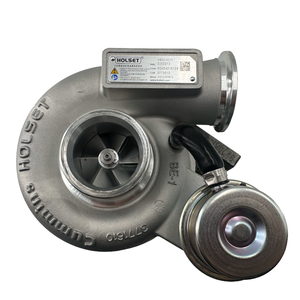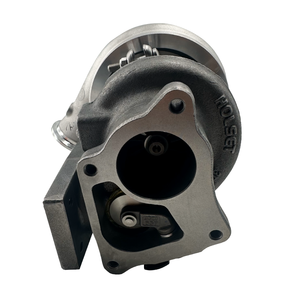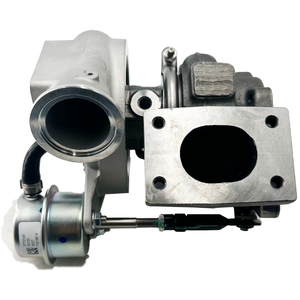
All categories
Featured selections
Trade Assurance
Buyer Central
Help Center
Get the app
Become a supplier

(7163 products available)














































A turbo intake pipe is a crucial part of a vehicle's intake system that channels air into the engine. The material it is made of and its position in the intake system determines its type. Here are some common types of turbo intake pipes.
By Material
Turbo intake pipes come in different materials, each with its advantages and drawbacks. Here are some common materials:
Steel: Turbo intake pipes made of steel are durable and strong. They are mostly used in heavy-duty trucks because they can withstand high pressure and stress. However, steel pipes are heavy and can rust if not coated or protected properly.
Aluminum: This is the most common material for turbo intake pipes. Aluminum pipes are lightweight, which makes them easy to handle and transport. They also don't rust like steel pipes. Moreover, aluminum pipes can be molded and shaped into different designs easily. However, aluminum pipes can crack under pressure, and they are not suitable for very high-temperature applications.
Plastic: Plastic turbo intake pipes are affordable and lightweight. They don't get as hot as metal pipes, which helps to improve air intake. Plastic pipes are also resistant to corrosion and can be molded into different shapes easily. The drawback is they are not suitable for high-pressure applications and can break or crack from impact.
Fiber-reinforced plastic (FRP): Turbo intake pipes made of FRP are strong and suitable for high-pressure applications. They are also lightweight and resistant to corrosion. However, FRP pipes are more expensive than other materials.
By Position in the Turbo System
A vehicle can have more than one intake pipe. Hence, manufacturers classify pipes according to their position in the system. Here are the common types:
The intake pipe is connected to the air filter on one end and the turbo inlet pipe on the other. It channels filtered air from the intake system to the turbocharger. The pipe is usually straight and can have bends to connect to other components.
The turbo inlet pipe directs air into the turbocharger. It compresses the incoming air to make it denser and increases its pressure. The inlet pipe is usually curved to allow smooth airflow into the turbo.
The turbo outlet pipe channels compressed air from the turbocharger to the intercooler or intake manifold. Like the inlet pipe, it is also curved to allow smooth airflow.
All the pipes connected to the turbocharger are called turbo intake pipes. They are crucial for maintaining proper airflow and pressure within the intake system, ensuring optimal engine performance and efficiency.
Material
The material of the intake pipe is very important for its performance. It is what determines how long it will last and how well it will work. Pipes can be made from a variety of materials. The most common ones are steel, aluminum, and plastic. Steel pipes are very strong and durable. They handle a lot of pressure and high temperatures well. Aluminum pipes are also strong and durable. They are often used in turbocharged engines because they are lightweight. Plastic pipes are less expensive than metal pipes. They are often used for short runs where high strength is not needed.
Diameter
The diameter of a turbo intake pipe affects how air flows through it and how much space there is for accessories like sensors and fittings. A larger pipe allows more airflow but can reduce low-end torque. A smaller pipe increases airflow at lower engine speeds but restricts top-end power. Most pipes range from 2 to 4 inches in diameter, with sizes varying based on the vehicle's make and model.
Length
The length of turbo pipes can range from a few inches to several feet. Longer pipes provide more distance for airflow but increase lag time. Shorter pipes reduce lag but may cause turbulence if not designed correctly. Finding the right balance between length and performance is crucial when selecting a pipe for a specific application.
Bend Angle
Bend angles impact airflow and pipe length. Intake pipes typically have multiple bends to fit within the engine bay. Gradual bends (up to 45 degrees) are ideal for maintaining smooth airflow, while sharper bends (over 90 degrees) can cause turbulence and restrict airflow. Properly designing the bend angles and radii in a turbo intake pipe can improve engine performance and efficiency.
Without proper cleaning and maintenance, the intake pipes can quickly deteriorate, leading to reduced engine performance and efficiency. Here are some cleaning and maintenance tips:
When purchasing a turbo intake pipe for resale, there are several factors to consider. First, the material of the intake pipe is important. Pipes made of aluminum and steel are very popular and have a high resale value. They also have a good profit margin. One should also consider nylon pipes. Although they are not very common, they are sought after by people looking for specific parts.
The size of the turbo intake pipe is another important aspect to consider when buying pipes for resale. Pipes are available in different sizes. It would be best to get a variety of sizes for a better profit margin. Some customers may come looking for a specific size. Ensure the pipes are measured in millimeters to help identify the size quickly.
Consider the type of fit when purchasing a turbo intake pipe. The most common pipe fittings are push-fit and clamp-fit. Pipes that have a push fit fitting are very easy to install. They are popular among people who prefer DIY projects. Clamp fit pipes are compatible with many turbo systems, making them a better purchase choice.
Invest in intake pipes that have been fitted with a silencer. When the intake air pipe draws in air, it causes a noise that can be quite distracting. An intake pipe that has been fitted with a silencer helps to reduce the noise caused by the air being drawn into the engine. This allows the driver to focus on the road without any distractions.
Replacing a turbo intake pipe is not as difficult as it sounds. With the right tools and some mechanical knowledge, the replacement can be done in no time. Here’s a step-by-step guide on how to turbo intake pipe replacement:
Firstly, gather the necessary tools before starting the process. The tools include a socket wrench set, pliers, screwdrivers, torque wrench, and a new intake pipe assembly. Some vehicles may require additional specialized tools.
1. Turn off the engine and allow it to cool down before starting the process.
2. Disconnect the battery by removing the negative terminal. This ensures no power runs through the system while working on it.
3. Remove the old intake pipe. Start by loosening the clamps connecting the pipe to the intercooler and the turbocharger using a screwdriver or socket wrench. Depending on the vehicle, there might be some bolts or brackets holding the pipe in place. Remove them and carefully take out the pipe. Be cautious not to drop any debris into the turbo or the intake manifold.
4. Before installing the new pipe, compare it with the old one to ensure they are the same. This step is very crucial since it helps avoid complications that arise from using the wrong pipe size or shape.
5. Install the new pipe. Connect the pipe to the turbocharger and the intercooler, ensuring the fittings align correctly. Tighten the clamps using a wrench. If there are any bolts or brackets, reinstall them and torque them to the manufacturer's specifications.
6. After installing the new turbo intake pipe, reconnect the battery by attaching the negative terminal. Start the engine and listen for any unusual noises or signs of leaks. If everything seems fine, close the hood and take the car for a test drive.
Q1: What is the purpose of the turbo intake pipe?
A1: The turbo intake pipe carries air from the air intake filter to the turbocharger. It helps to increase the airflow going into the turbo, which can improve the performance of the car.
Q2: What materials are commonly used for turbo intake pipes?
A2: Turbo intake pipes are often made from aluminum, steel, or silicone. Aluminum is popular because it is lightweight and can be molded into different shapes easily.
Q3: Can the turbo intake pipe be customized for specific vehicles?
A3: Yes, the turbo intake pipe can be customized to fit different makes and models of cars. This ensures a proper fit and maximizes the intake pipe's performance.
Q4: What are the potential benefits of upgrading the turbo intake pipe?
A4: Upgrading the turbo intake pipe can lead to better throttle response, increased horsepower, and improved torque. It allows the turbo to spool up faster and deliver more air to the engine.
Q5: How can one ensure the longevity and durability of the turbo intake pipe?
A5: Using high-quality materials and proper maintenance, such as regular cleaning and checking for leaks, can help ensure the durability of the turbo intake pipe.